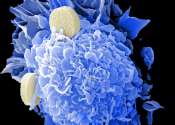Filling in genomic blanks for disease studies works better for some groups than others
Understanding how genetics affect health is an essential first step toward treating and preventing a host of diseases. New knowledge often comes from genome-wide association studies identifying variations in the genetic code ...
Apr 10, 2024
0
0









